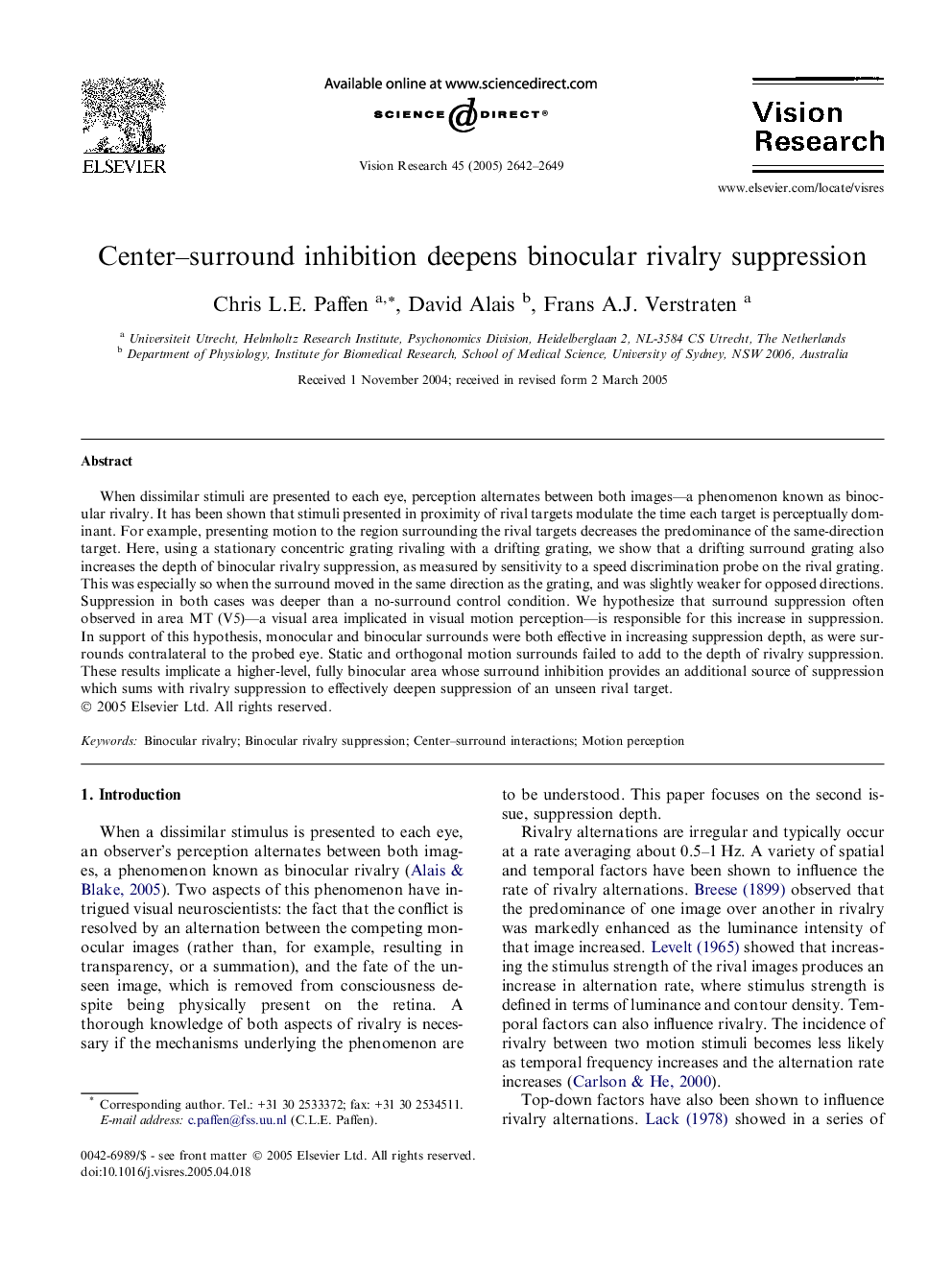| Article ID | Journal | Published Year | Pages | File Type |
|---|---|---|---|---|
| 4036062 | Vision Research | 2005 | 8 Pages |
When dissimilar stimuli are presented to each eye, perception alternates between both images—a phenomenon known as binocular rivalry. It has been shown that stimuli presented in proximity of rival targets modulate the time each target is perceptually dominant. For example, presenting motion to the region surrounding the rival targets decreases the predominance of the same-direction target. Here, using a stationary concentric grating rivaling with a drifting grating, we show that a drifting surround grating also increases the depth of binocular rivalry suppression, as measured by sensitivity to a speed discrimination probe on the rival grating. This was especially so when the surround moved in the same direction as the grating, and was slightly weaker for opposed directions. Suppression in both cases was deeper than a no-surround control condition. We hypothesize that surround suppression often observed in area MT (V5)—a visual area implicated in visual motion perception—is responsible for this increase in suppression. In support of this hypothesis, monocular and binocular surrounds were both effective in increasing suppression depth, as were surrounds contralateral to the probed eye. Static and orthogonal motion surrounds failed to add to the depth of rivalry suppression. These results implicate a higher-level, fully binocular area whose surround inhibition provides an additional source of suppression which sums with rivalry suppression to effectively deepen suppression of an unseen rival target.
